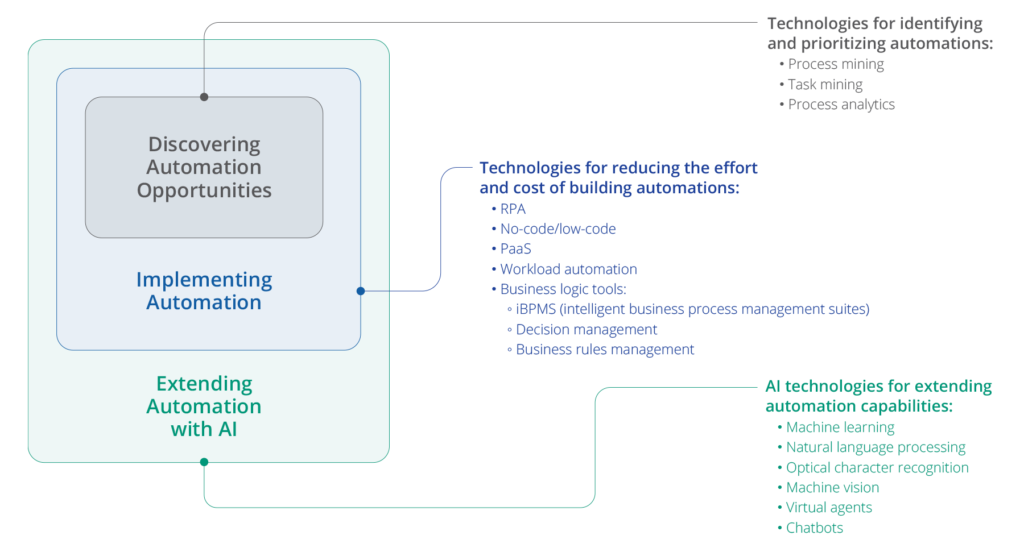Intelligent Automation
Add intelligence to your processes to enable a systematic approach to discovering more enterprise automation opportunities.


The future of work is here. Many organizations have used siloed solutions to help solve specific problems. From departmental document management systems and workflow in their ERP to an electronic forms product, it’s time to evaluate and invest in solutions that scale across your organization and solve multiple business problems. We understand you are balancing tight budgets and need better technology to help you operate, respond, and serve your customers.
The integration of artificial intelligence (AI), machine learning (ML), process mining and other business process tools working together to improve an organization’s ability to operate is the combination of the term hyperautomation. By pooling business process management (BPM) with robotic process automation (RPA), your organization has the power to assign specific steps or tasks of any given process for the software bot to perform.

Regardless of the business sector or industry your organization serves, all business process activities must evolve to remain relevant from a competitive and functional standpoint, in addition to keeping up with the demands of the client or customer base you serve. Technology adaptation is critical to that point, and the tools available to entities to maintain that relevance are vast.
The term hyperautomation was born around the idea that within the intelligent automation space there is no one tool to get the job done, and the combination of these tools produces results greater than the sum of each individual component. This is explained by looking at two tools in particular, Robotic Process Automation (RPA) and Business Process Management (BPM).
Eliminates rekeying of data.
Reconciliation of various data sets.
Connects gaps between multi-legacy and modern applications.
Mapping our activities.
Establishing work queues.
Managing task assignments.
Ensuring a controlled and accountable environment.
Start transforming your work. Explore insights, guides, stories, videos, and blogs.

We put clients first, always. Our team is ready to show you the MCCi difference. Send us a message and we will follow up with you in one business day.
3717 Apalachee Parkway,
Suite 201
Tallahassee, FL 32311
800.342.2633 Toll-Free
850.701.0725 Local
866.942.0464 Support
© Copyright 2024 MCCi | Privacy Policy | Site Map


